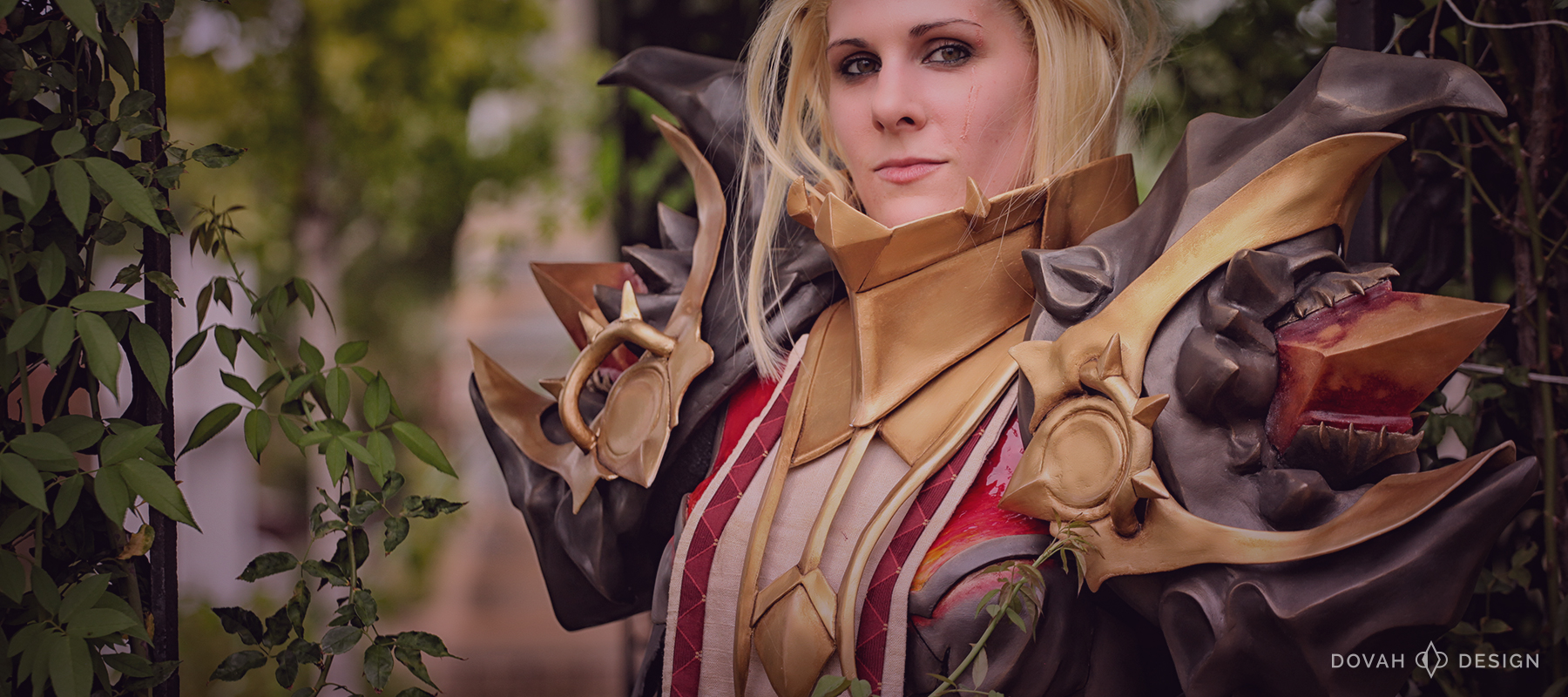The Pauldrons of Akkhan have finally been perfected! It took me months to decide how to fix these giant pieces of armor, especially after the disappointment of their failure in 2015. The goal for 2016 was to lighten the weight of each pauldron, recreate their glowing “spike” centers, and ensure each was centered on my shoulder when worn. I admit, I didn’t know where to begin!
Getting Rid of the Guts

Making a Custom Rubber Mold





Casting the Perfect Spike

NOTE: Once the first layer of resin is poured and “slushed,” the release agent and gold powder steps do not need to be repeated until you begin a new pour.
Filling in the Details



Getting the Pauldrons to Stay Put

The final piece to this puzzle was attaching the buckles in just the right place. After testing, I decided each pauldron needed three nylon straps and buckles to remain stable. I sewed each the nylon strap to a D ring, then attached each D ring to the inside of the pauldrons with a scrap Worbla. Two buckles would attach to my cuirass shoulder straps, at the front-center of each pauldron. The third strap attached to the middle-back of each pauldron. These back straps buckle into the back of the cuirass, but on the opposite sides of my body. Essentially, the straps form an “X” across my back, which is hidden by the fabric tabard when the full costume is worn.
Sidenote, be sure to glue down raw edges of cut nylon strapping to keep it from fraying. I use Tacky Glue as it’s invisible and nearly invincible once dry.




The Final Touches
The last thing to do was add the final touches. I sanded the outside of each pauldron for hours to remove as many imperfections as possible. Then coated with gesso, sanded some more, spray painted, and hand painted with acrylic. Whew! I’ll let you be the judge of the final results.

With the updated shoulders, armor pieces, and new paint job, this costume brought home the prize for “Best Use of Prop/Armor” at the 2016 DragonCon Friday Night Costume Contest. It’s such an honor to be recognized by some of the best in the industry. It makes the seemingly endless struggle to perfect these pauldrons SO worth it in the end. Now on to the next challenge!
Erei Un Grind — Happy crafting, everyone.
Resources for Slush Casting
- This post by artist Nefeni Cosplay was a HUGE help in understanding the steps necessary to finishing my cast positive
- The Dorans of Punished Props make it super easy to follow their detailed video on how to slush cast
- SmoothOn has a super helpful step-by-step video for using Rebound 25 silicone rubber
- Cardboard, for “spike” shape and flat base
- Paperclay
- Sandpaper, Grits 80 – 400
- Rust-oleum Automotive Primer
- Krylon “Crystal Clear”
Acrylic Coating
- SmoothOn’s Rebound 25
, brush on silicone rubber
- Mann’s Ease Release 200
- SmoothOn’s Smooth Cast 325
- SO-Strong Red pigment
- Cast Magic Powder in Goldfinger
- Gypsum Strips & Vaseline for the shell
NOTE: Check out my new and improved Armor of Akkhan with the updated pauldrons here.
*Full Disclosure: I get credit when you purchase items via my Amazon links in this article! Any profits I receive from Amazon will go directly back into more blog posts and tutorials. Thanks in advance for considering a purchase 🐲


